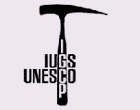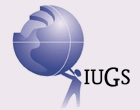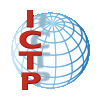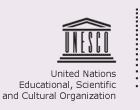| SMLAC | ICTP Network Net-58 - IGCP Project 487 | ||||||||

|
|||||||||
|
Head of the project
José Leonardo Alvarez Gómez
Senior Associate ICTP Centro Nacional de Investigaciones Sismológicas, Cuba |
|||||||||
|
The
main objective of the project is the prediction of expected earthquake
effects in important cities of Latin America, in order to reduce the
possible impact of great earthquakes. This prediction have two
different parts; first of all it is necessary to determine the most
probable earthquake (or in some cases the bigger one) that can affect a
city, i.e., seismic hazard assessment (probabilistic or deterministic)
expressed in values of expected seismic effects for a particular kind
of soil at a regional scale, and second, it has to be evaluated how
this regional estimation varies throughout a city, that in general is
placed in a sedimentary basin, where local incremental effects are
commonly present. The first part is at present well known in the Latin
America region, as a result of more than 20 years of seismic hazard
assessment studies, probabilistic or deterministic, accomplished at
national or regional scales. Their results give the initial base for
our project that will not repeat this kind of work. The second part is
more complicated, it falls in which it is known as seismic microzoning,
a kind of work that normally involves big research teams, the use of
expensive equipment and long time of registration of local earthquakes
or microseisms. An alternative to solve this problem was
developed at the beginning of past decade and was successfully tested,
at a global scale, in the recently finished UNESCO/IGCP Project 414
"Determination of seismic input of megacities and large urban areas".
It consists of a calculation of realistic synthetic seismograms on the
basis of an accurate knowledge of three dimensional structures and
expected source mechanism. The big earthquake is then simulated and
useful predictions about the expected ground motion can be done. During
the already mentioned project 414, it has been developed or upgraded
the necessary software for making the calculations. It is based on a
powerful computer network in ICTP that can be remotely accessed during
the project duration. As ICTP is oriented toward practical training and
updating of knowledge of scientist and students from developing
countries, training with this institution will be an important aspect
of our program. This training will be directed to the application of
advanced computational techniques to the solution of the study problem.
It will be complemented with regional meetings or seminars. The
objective of this project is to contribute to the seismic microzoning
of the selected cities, starting with relative amplification profiles
or maps based upon response spectra and elastic energy spectra
computations or simple ground motion values, and with a possible final
output in the form of detailed microzoning maps. This last
objective (the more desirable in microzoning studies) will depend on
the quantity and quality of initial data on local structures that
participants could obtain during project duration.
Estimated duration of the
project: 5 years
|
|||||||||
|
|||||||||



